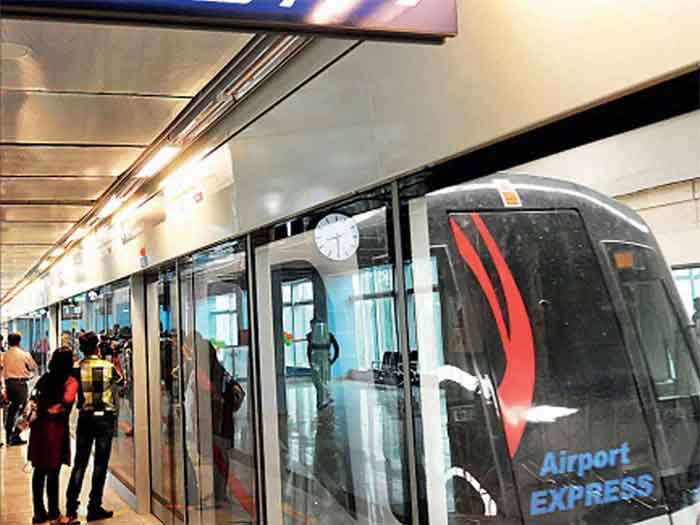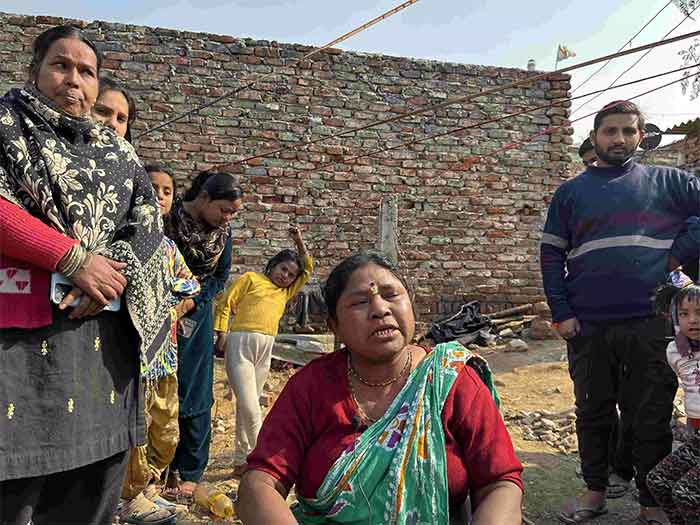
If the homeless people faced a difficult time earlier in heat wave conditions, they are now suffering due to heavy rain in many places. Yet concerns relating to them hardly ever become a leading concern, except perhaps for a very few days in a year in a few places where deaths on footpaths caused by cold wave are reported. The most scorching summer that India just experienced did not draw much attention, as it should have, to the increasing risks and problems the urban homeless now face in summer. The programs for them were earlier drawn up mainly keeping in mind the needs of a shorter winter season (about 14 weeks). Extra shelters of a temporary nature are created for them at several places during these weeks which are folded up around mid-March.
However with the temperatures shooting up as high as 47 to 49 degrees or even higher in several cities there is increasing need for more shelters which can provide protection during heat waves as well. Moreover shelter is needed not just for sleeping at night, but also to protect from the afternoon sun.
In addition, shelters for the homeless are also important for the rainy season, particularly as rains come increasingly in bigger torrents.
When my first involvement with the homeless of the Delhi started in the 1980s, there were very few shelters and most of the homeless slept completely in the open. The summer then used to be actually the relatively better season for them. In the bitterly cold nights some of them did not even have a proper blanket. There were reports from time to time of the homeless dying from exposure to excessive cold.
Later as I got involved for several years as a Board Member ( and for some time as Chairperson) of a program for the homeless, efforts were directed mainly at better management of shelters and ensuring that more of the homeless can reach these shelters. Thanks partly to court directives, the number of shelters started increasing in Delhi as well as other cities of India.
Yet shelters remained much less than the actual need, in part because the numbers of the homeless were so glaringly undercounted. The homeless are the most difficult to count in any census. While the latest census of 2011 counted only 1.77 million as the homeless (0.94 in cities and 0.83 m in villages), my stand has always been to regard 1% of the urban population as the minimum number of homeless in any city, which would yield a figure of around 4.8 million today in cities alone.
Add to this a somewhat similar number in rural areas, where nearly two thirds of the total population lives, and you get a figure close to almost 10 million. The number of people made homeless by relentless river erosion and more ferocious floods in times of climate change has been increasing in rural areas.
In addition my research emphasized another section which I called ‘precariously housed, almost on the verge of homelessness’. In the hut colonies I used to see families cramped in such limited space that not all members could be accommodated. Children would be on the street most of the time. Even on a winter night someone would be outside the hut.
Moreover the daily wage workers who are unable to pay rent can be evicted all too soon, as was seen during COVID times, and this still remains a threat with high levels of urban unemployment. Even in the middle of COVID times as well as heat wave conditions, government authorities have resorted to slum demolitions in leading cities like Delhi, Faridabad and Chandigarh, even though most studies favor on site improvements in slums.
Slum demolitions increasingly do not provide for rehabilitation to most of those who are evicted. Hence these are most likely to increase the number of homeless persons. Some of the earlier demolitions relocated workers to more distant areas, increasing livelihood problems which over a period of time can also push towards homelessness.
Working in the open in scorching hot weather and then travelling home to an exceptionally hot and congested slum in an overcrowded bus, a construction worker may not get any relief from the heat wave, but the prospects for an entirely homeless person may be even worse.
Within homeless persons, women are the most vulnerable, and their condition in terms of meeting essential sanitation needs, privacy and security is alarming. Street children may fall in several categories, but the worst off are the entirely homeless ones.
Climate change has increased the numbers as well as the vulnerability of the homeless, but unjust policies are also adding to these woes. Programs to help the homeless should be scaled up and improved significantly on the basis of urgency, while unjust and arbitrary policies which increase their numbers and problems must be checked. In addition to better government policy, voluntary efforts to help the homeless can contribute much to their welfare.
This is particularly important in the context of medical care. An inspiring example was provided by Dr. Jack Preger in taking medical care to pavements of Kolkata, a pioneering effort which later influenced several efforts of pavement medicine.
The importance of increasing official as well as voluntary efforts for the welfare of homeless people cannot be over-emphasized. This is true not just for India, but for most other middle and low income countries as well, where sufferings of the homeless people can be much higher than in conditions of developed, richer countries. In fact the numbers of homeless people are at surprisingly high levels at present also in some rich countries like the USA, but the level of deprivation and distress experienced by the homeless people in low and middle income countries including India is much higher.
Bharat Dogra was a former Board Member and for some time also the Honorary Chairperson for a leading program of homeless people in India. He is presently Honorary Convener of Campaign to Save Earth Now. His recent books include A Day in 2071, Navjeevan, Planet in Peril and Man over Machine.















































